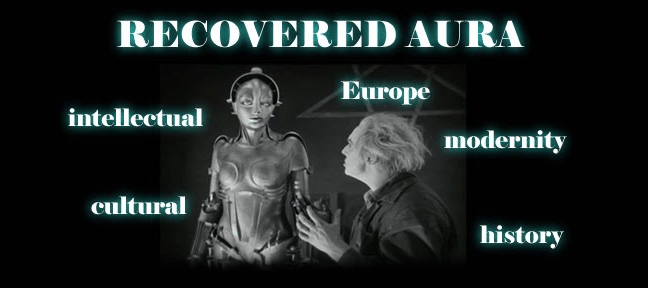On Wednesday I'll be lecturing on sexuality and death in modern art and modern music at the end of the 19th C. and the beginning of the 20th C. Our two entry points into this subject will be Richard Strauss's opera SALOME (1905) and Igor Stravinsky's ballet THE RITE OF SPRING (1913). I'll be showing how various cultural streams of thought and aesthetic styles (decadence, Art Nouveua, Symbolism, primitivism, Orientalism, psychology, early anthropology etc.) fed into and informed the making of these two works. SALOME has long been associated with the idea of decadence, ruin and lust connected to death. THE RITE, on the other hand, while just as violent and shocking, draws on another narrative about the primitive and the affirming powers of life. Thus I unfold SALOME through an analysis of its negative decadence and THE RITE through that of its positive dynamics.
If SALOME is a symbol for the death of old Europe then THE RITE is a symbol for the hope of a new Europe- freed from the shackles of decaying morality and modern malaise.
Please take a few minutes to listen to a bit of each of these remarkable pieces of music! See you all on Wednesday for Freud, Strauss and Stravinsky! It's going to be lots of fun.
The princess Salome has Jokanaan (John the Bapstist) brought out of the well where he is kept to sing to him of her longing. He rejects her and she is infuriated. Notice the object of lust is being raised out of his prison: a well- something longed for (and later hated) is hidden in a deep, dark place.
SALOME- Karita Mattila Met. Opera, 2004
The Dance of the Seven Veils is probably the most famous strip-tease of all time.
Salome has convinced King Herod, her step-father, to give her whatever she asks for, if she dances for him. Guess what she wants. The next 5 clips are the dance (1-2) and the final scene (3-5) where Salome sings to the severed head of the prophet with whom she was in love/lust.
This is Teresa Stratas as SALOME from a 1970's filmed version of the opera. Notice the blatant Orientalism and racialist imagery--- this is usually avoided by contemporary adaptations, though it's true to the long tradition of the opera's staging. This an old European trope: the eastern, the African, the exotic signify lust and "savage" primal appetites. Hmmm- can you say PROJECTION?
Tuesday, March 16, 2010
Subscribe to:
Post Comments (Atom)

No comments:
Post a Comment